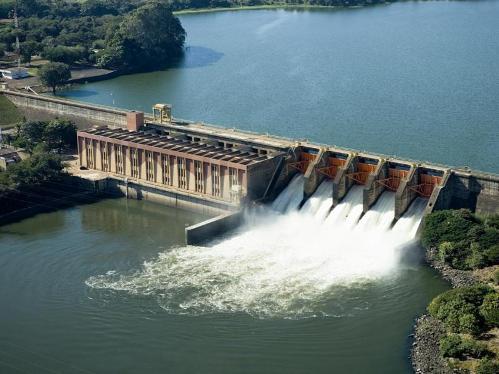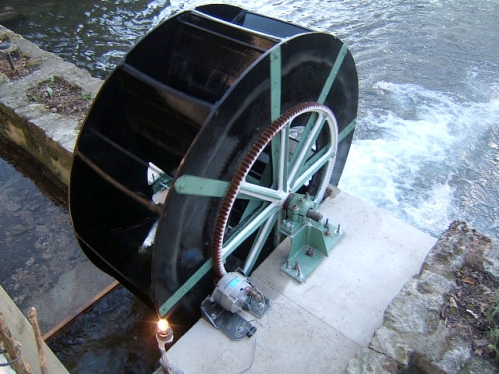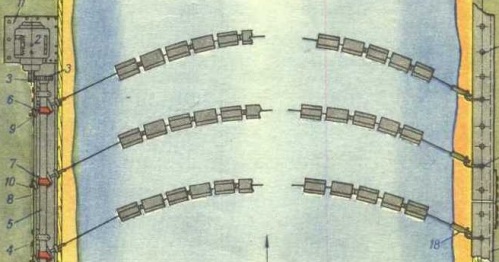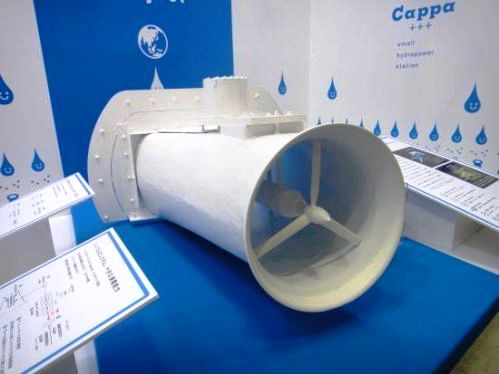Categories: Featured Articles » Autonomous power supply
Number of views: 9767
Comments on the article: 0
Mini and micro hydropower plants - popular designs and applications
If you look at today's industrial energy, if you pay attention to the dynamics of developments in the field of alternative energy, you can easily notice that such a stereotype has long been formed here: a flat river is basically not suitable for generating power at hydroelectric power plants.
Large hydropower plants are being built using equipment originally designed to produce large electrical capacities at steep edges or on mountain rivers, where the water flow rate reaches at least 2 m / s.
Generator sets for such hydropower plants are not suitable for operation on a relatively weak stream of a lowland river. For these purposes (for any rivers), only hiking toys for charging cell phones for a couple of watts are sold ...

Of course, to build a dam for the subsequent construction of an industrial hydroelectric station on it is an expensive undertaking, it will take a long time to pay off, and in general there is no sense in setting up a traditional hydroelectric station on a plain river. Even if a conventional propulsion device is installed on a lowland river, its efficiency will not allow it to get normal power at low speeds, especially taking into account losses on the gearbox.
Finally, those formulas that say that a water velocity of less than 2 m / s is not suitable for hydropower, are simply not designed to be applied to small currents. Here, different formulas and different approaches to generation are needed than at large industrial hydropower plants.
Imagine how low-power hydraulic installations could provide electricity to the inaccessible areas of our country, and the small costs of their construction would quickly pay off. On small streams you can already build mini- and micro-hydroelectric power stations. How would this affect the development of alternative energy, the potential of which in Russia is realized only a fraction of a percent?
A mini-hydroelectric power station is enough to power a holiday village, a manor, a farm, a farm located near any river, where it is impossible to lay a normal electric network, however. Even at water supply and sanitation facilities, it is possible in principle to arrange micro-hydroelectric power plants. Moreover, the designs of small hydropower plants have long been ripening and ripening in the minds of caring, creative people.
Let's look at the most popular designs of homemade mini hydroelectric power stations. So, small-sized small hydroelectric power stations are always flowing hydroelectric power stations with a capacity of several hundred watts to several tens of kilowatts, using the energy of the free flow of the river, whose rotors can be arranged in different ways. There are three main types of rotors for mini hydropower plants: a water wheel, a garland and a propeller.

The water wheel is installed perpendicular to the river, immersing it less than half of the shoulder blades in the water. The current rotates the wheel, crashing into the blades, and the wheel rotates the rotor of the generator (through a cardan, gear or other gear). This is the simplest and most versatile type of turbine for mini-hydro: they are the least bulky, occupy the smallest area, and have the highest efficiency.
Such wheels can be installed on the river or even on a small mountain stream. In home-made models, you can often find a car generator converted to permanent magnets as a generator. The power of wheel models reaches units of kilowatts.

A garland hydroelectric power station is a set of long cables with cylindrical rotors fixed to them, one after another, which are transferred from one river bank to another. The rotors immersed in the water rotate along the river, turning the cables into rotation, and the cables rotate the generator rotor through the gears.
Such a construction is quite material-intensive and in some way dangerous because it blocks the riverbed like a dam.
A variation of this idea is rotors with blades on a rotating axis, which transfers rotation through a cardan to a synchronous generator. Generators of this kind are manufactured per kilowatt unit.

Propeller - it looks like a wind turbine with thin blades overturned under water, installed in a pipe. The thickness of the blades and the diameter of the pipe depend on the flow velocity at the installation site of the rotor. The rotation here is transmitted through the gearbox to the generator rotor.
This type of turbine turns out to be the most specialized, since the turbine is manufactured strictly for the flow conditions at the installation site, so that the water velocity in the pipe increases.
Generators of this type are not only made independently by amateurs, they are also produced by industry: one Japanese company produces such generators with a capacity of 250 watts.
Equally important is the power equipment installed at the mini-hydroelectric power station. It should work in concert with the pressure and flow rate, have stabilization and electronics with the ability to switch to manual control, equipped with all types of protections, including from emergency situations.
See also at i.electricianexp.com
:
